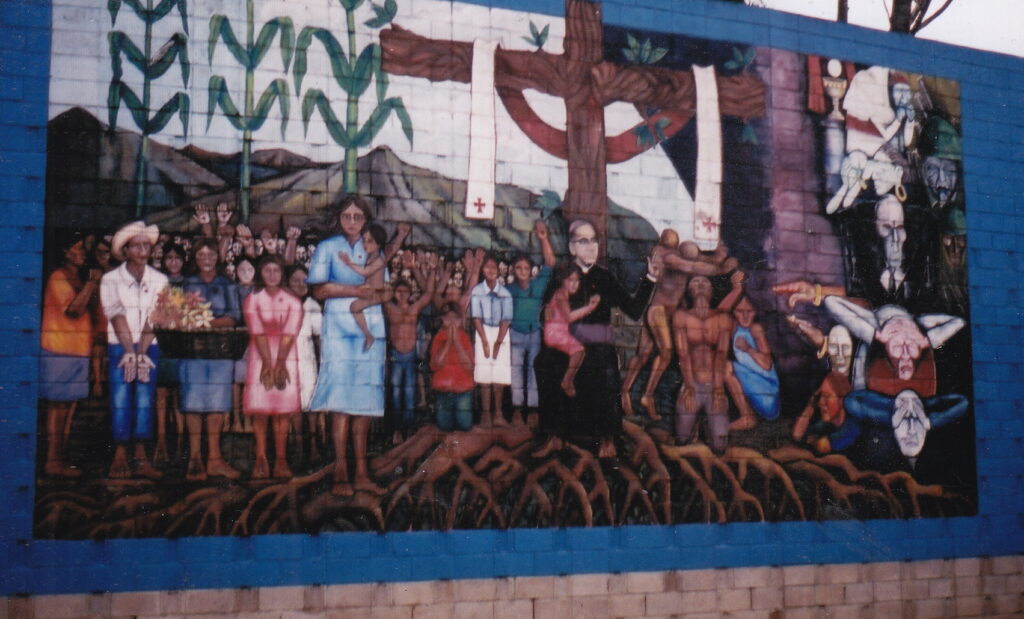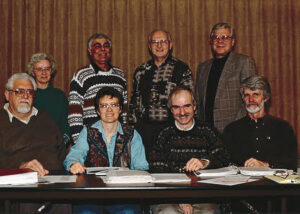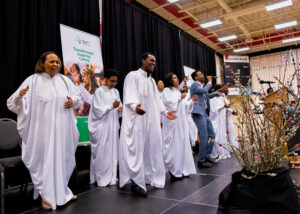It’s not easy to come up with fresh, new material for Easter, so we dug up something nearly 500 years old instead. We’re putting the “Menno” in Canadian Mennonite, literally—the original Menno. And while most of us are not accustomed to someone admonishing us to die to the carnal self, perhaps in our time of soul-smothering digital distraction and spiritually vacuous consumer excess, Menno Simons’ call to mortify the flesh and rise with Christ will sound fresh and new in its own way.
I find Simons’ heavy-handed talk of sin and his seeming body-soul duality unsavoury, but I also figure someone willing to take the risks he took is probably worthy of attention.
After Simons’ words on the “spiritual resurrection” we share 10 short accounts of favourite Easter memories, images and wonderings. Much gratitude to those who contributed. I’ll add my own here.
While visiting El Salvador in 2003, I saw many murals of the martyred Archbishop Oscar Romero, especially in villages and small towns. Romero, once part of the nation’s elite, was ultimately shot at the altar for challenging the principalities and powers, and standing with the peasants.
One thing I love about Romero is that not only did he publicly and repeatedly call the rich and violent to repent before God, but he also called on guerrillas and activists to seek not only temporal change but always, also, transformation of heart and soul. The gospel he preached was firmly rooted in the physical realities of the nation, and it was thoroughly of Spirit (“There can be no liberation until people are freed from sin”).
In one of the more common Romero quotes painted on buildings, he says: “As a Christian, I do not believe in death without resurrection. If they kill me, I will rise again in the Salvadoran people.”
Days later, on March 24, 1980, he was killed, like numerous other clergy, nuns and peasants before and after him. The murals I saw around the country attest to the fact that his life, in a very real sense, continued on.
Romero did not stop the civil war or upend the temporal structures of power, but in his story we see there is that which bullets cannot kill, something of Spirit that is victorious over death.
Those murals are one Easter image I hold to.
For me, the story of Romero connects also with Kevin Barkowsky’s column in which he notes that Mennonites “are willing to suffer for [Jesus].” Fresh back from a trip to Asia, Barkowsky is not talking metaphorically. Like Romero, like Menno Simons, like many other early Anabaptists, our sisters and brothers in other parts of the world today take real risks and endure real consequences for their faith. Surely it is a profound grasp of the power of resurrection that gives them the courage to walk the narrow path that leads to Easter.
When I spoke last year to Desalegn Abebe, head of the Mennonite church in Ethiopia, he said peace is, “Not a work, not a project, not something we do; it is something we live for and something we should die for.” Another time, he said, “it’s now time to stand firm with truth, to speak it out, even die for it.”
Menno Simons would not have flinched at such a statement, but it certainly gave me pause. Those words stay with me. Surely people who willingly face harm know Easter in a way I do not.
Let us give thanks for the witness of courage past and present; let us ask God to grant continued courage to believers around the world who live risky faith; and let us entreat God to grant us a measure of resurrection courage.
By way of introduction
Last issue I noted that we hired Madalene Arias as Eastern Canada correspondent. On page 16, she shares the remarkable story of her and her family.
Will Braun welcomes feedback at editor@canadianmennonite.org.
Read more editorials:
Is the ban back?
Red carpet hayloft
The evangelical edge
Peace and popularity
The holy paradox of modern Mennonite identity









Leave a Reply
You must be logged in to post a comment.